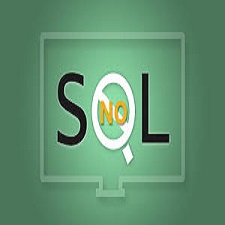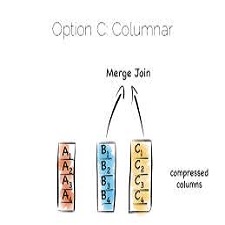توضیحات
ABSTRACT
This paper overviews the diverse information technologies that are used to provide athletes with relevant feedback. Examples taken from various sports are used to illustrate selected applications of technology-based feedback. Several feedback systems are discussed, including vision, audition and proprioception. Each technology described here is based on the assumption that feedback would eventually enhance skill acquisition and sport performance and, as such, its usefulness to athletes and coaches in training is critically evaluated.
INTRODUCTION
It is well documented that when feedback is provided in an appropriate manner, motor skill acquisition improves signi® cantly (see Schmidt and Lee, 1999, for a review). Consequently, feedback is a major factor in the improvement of sport skill performance. Recently advances in information technology have made it possible to augment and improve the feedback athletes receive during training and competition. oreover,
modern technology has had such a profound impact on sport that many athletes and coaches now consider information derived from echnological advances to be invaluable. This might be related to the concept of feedback that originated in mechanical control theory. In accordance with such engineering models, loseloop systems were designed to keep homeostasis or equilibrium around a reference value, which, in turn, would allow the work of a main actuator (Shannon and Weaver, 1949). Deviations from the steady-state reference were coded as error, which would then drive the system to compensate or correct. That is, in movement science, feedback information about movement was generally expected to allow systematic corrections in the performance. However, feedback will be relevant to the human learner if, and only if, the individual knows the performance goal and perceives the need to carry out corrections relative to some expected outcome. Under such assumptions, a coach should strive to provide an environment that is conducive to optimum learning by augmenting the feedback that athletes receive. Feedback should thus enable athletes to modify their movements and produce optimum performance.
چکیده
این مقاله به بررسی تکنولوژی های اطلاعات متنوعی که برای ارائه ورزشکاران با بازخورد مناسب استفاده می شود. مثال هایی از ورزش های مختلف برای نشان دادن برنامه های انتخابی بازخورد مبتنی بر تکنولوژی استفاده می شود. چندین سیستم بازخورد مورد بحث قرار گرفته است، از جمله بینش، شنوایی و خودآزاری. هر تکنولوژی که در اینجا توضیح داده شده است بر این فرض استوار است که بازخورد در نهایت باعث افزایش مهارت و عملکرد ورزشی خواهد شد و به همین ترتیب مفید بودن آن برای ورزشکاران و مربیان در آموزش، مورد انتقاد قرار می گیرد.
مقدمه
به خوبی تایید شده است که وقتی بازخورد به شیوه ای مناسب ارائه می شود، مهارت مهارت در موتور بهبود می یابد signi® cantly (see Schmidt and Lee، 1999، برای یک بررسی). در نتیجه، بازخورد یک عامل مهم در بهبود عملکرد مهارت های ورزشی است. به تازگی پیشرفت در فن آوری اطلاعات باعث شده است که ورزشکاران بازخورد در طول تمرین و رقابت را تقویت و بهبود بخشند. یاور فن آوری مدرن تاثیر زیادی بر ورزش داشته است که بسیاری از ورزشکاران و مربیان در حال حاضر اطلاعاتی را که از پیشرفت های تکنولوژیکی به دست می آورند ارزشمند هستند. این ممکن است به مفهوم بازخورد مربوط به نظریه کنترل مکانیکی مربوط شود. مطابق با چنین مدل های مهندسی، سیستم های loseloop برای ایجاد هوموستازی یا تعادل در اطراف یک مقدار مرجع طراحی شده اند که به نوبه خود اجازه می دهد که یک عملگر اصلی (Shannon and Weaver، 1949) اجازه داده شود. انحراف از مرجع حالت پایدار به عنوان خطا کد گذاری شده است و پس از آن سیستم را به جبران یا اصلاح رانندگی می کند. به عبارت دیگر، در علم حرکت، اطلاعات بازخوردی در مورد حرکت به طور کلی انتظار می رود که اصلاح سیستماتیک را در عملکرد انجام دهد. با این حال، بازخورد مربوط به یادگیرنده انسانی خواهد بود، و تنها در صورتی که فرد اهداف عملکرد را می داند و نیاز به انجام اصلاحات نسبت به برخی از نتایج مورد انتظار را درک می کند. تحت چنین فرضهایی، یک مربی باید تلاش کند که محیطی را فراهم کند که به آموزش مطلوب منجر شود که باعث تقویت بازخوردی است که ورزشکاران دریافت می کنند. بازخورد باید سبب فعال شدن ورزشکاران در تغییر حرکات آنها و تولید مطلوب شود.
Year: 2002
Publisher : Journal of Sports Sciences
By : DARIO G. LIEBERMANN, LARRY KATZ, MIKE D. HUGHES, ROGER M. BARTLETT, JIM McCLEMENTS and IAN M. FRANKS
File Information: English Language/ 15 Page / size: 477 KB
Only site members can download free of charge after registering and adding to the cart
سال : 1381
ناشر : مجله علوم ورزشی
کاری از : داريو جيليبرمن، لاري كاتز، ميكا د هگها، راجر مارتا بارتلت، جيم مك كلامز و يان م. فرانس
اطلاعات فایل : زبان انگلیسی / 15 صفحه / حجم : KB 477


![Advances in the application of information technology[taliem.ir]](https://taliem.ir/wp-content/uploads/Advances-in-the-application-of-information-technologytaliem.ir_.jpg)





![EMG amplitude and frequency parameters of muscular activity[taliem.ir]](https://taliem.ir/wp-content/uploads/EMG-amplitude-and-frequency-parameters-of-muscular-activitytaliem.ir_-150x150.jpg)
![Aging, Functional Capacity and Eccentric Exercise Training[taliem.ir]](https://taliem.ir/wp-content/uploads/Aging-Functional-Capacity-and-Eccentric-Exercise-Trainingtaliem.ir_-150x150.jpg)
نقد و بررسیها
هنوز بررسیای ثبت نشده است.